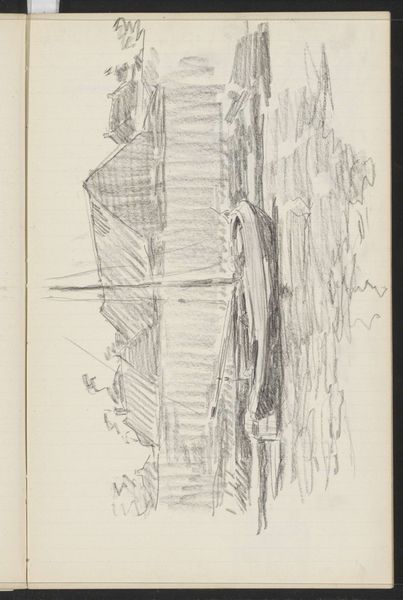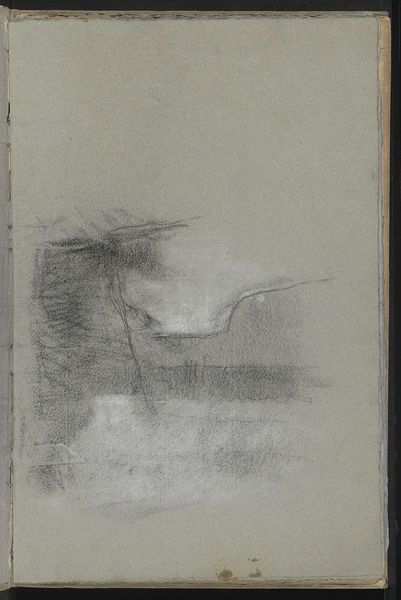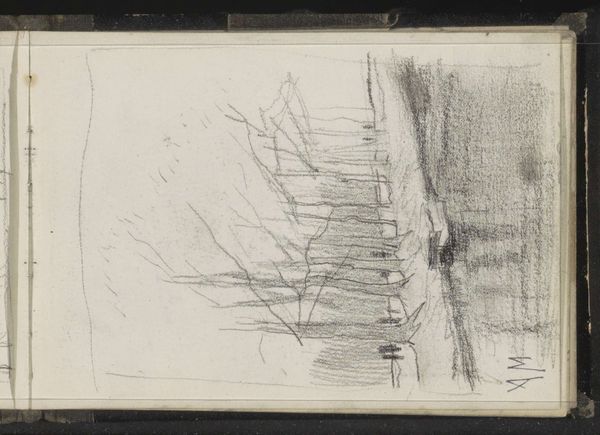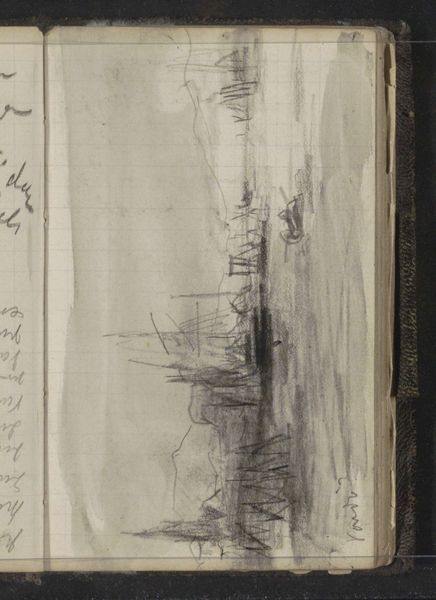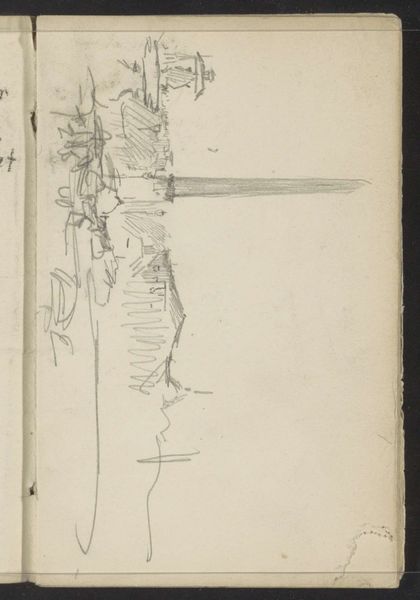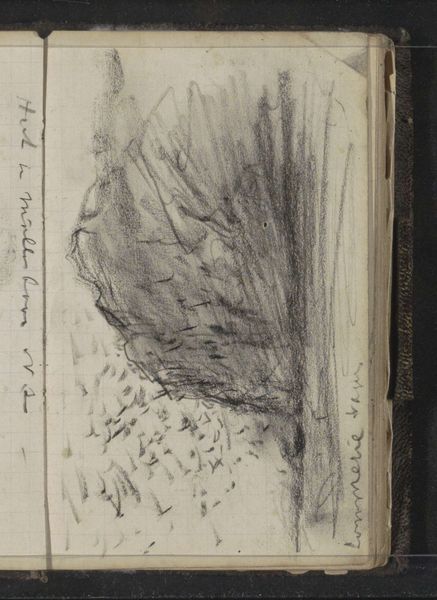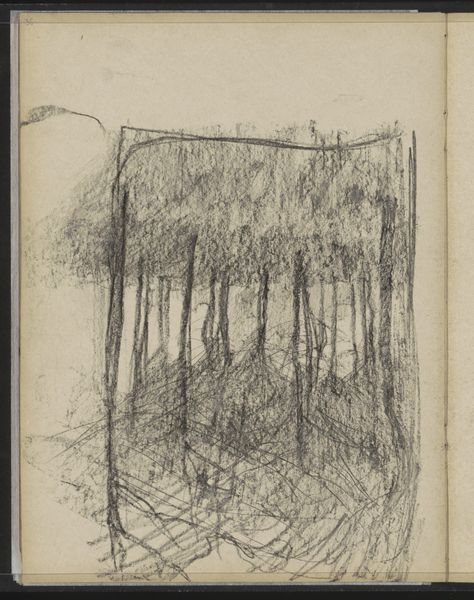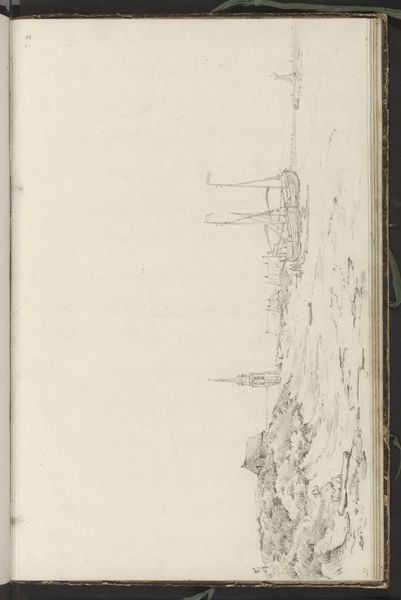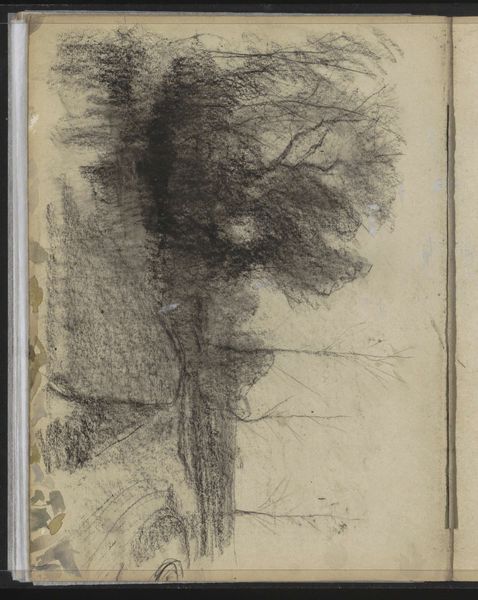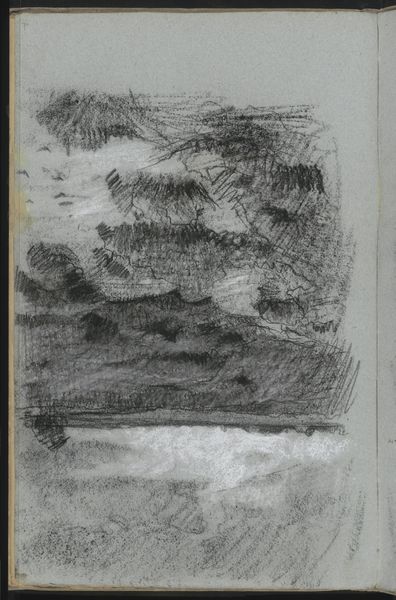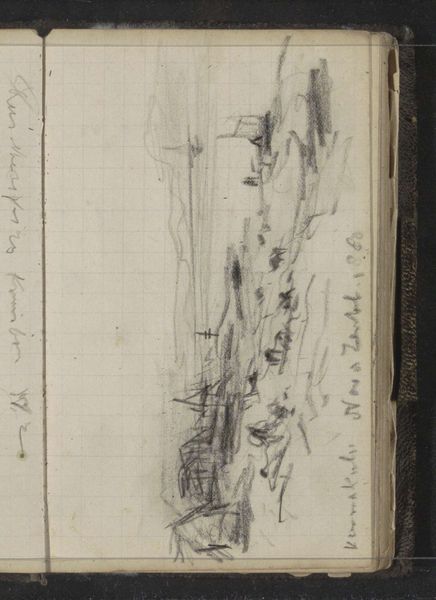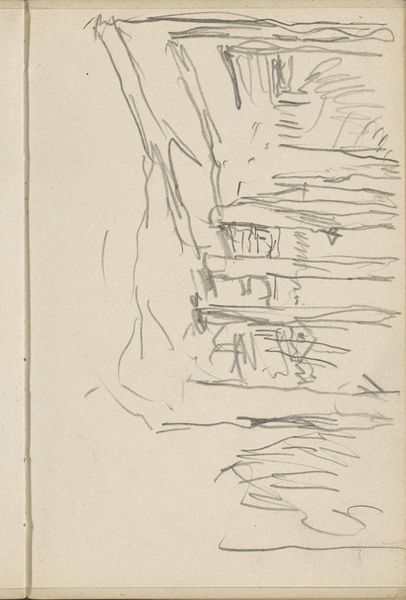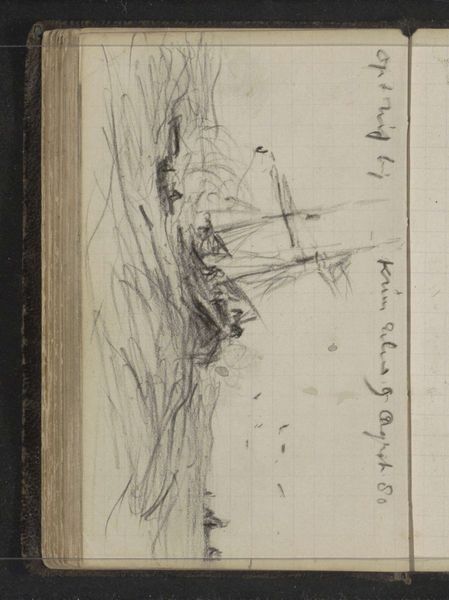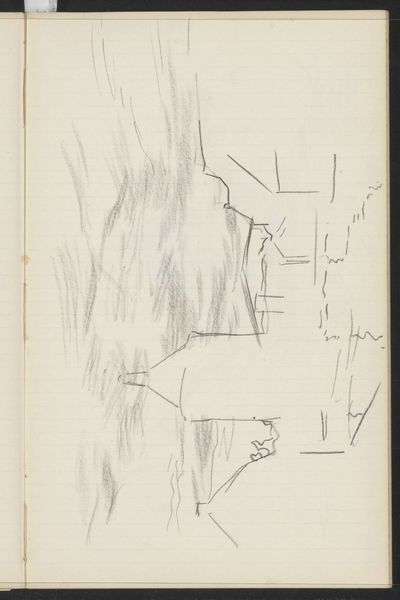
drawing, plein-air, graphite, charcoal
#
drawing
#
impressionism
#
plein-air
#
landscape
#
graphite
#
charcoal
#
realism
Copyright: Rijks Museum: Open Domain
Curator: This is Willem Witsen’s "Landschap met bebouwing," a landscape drawing rendered circa 1887-1888. Editor: My initial impression is one of stark contrast. The piece appears almost divided; a dark, dense forest against a much more open, lightly sketched area. There's an unsettling feeling—an emptiness perhaps. Curator: Note how Witsen masterfully uses graphite and charcoal to achieve this very dichotomy. The thick, layered strokes on the left create a sense of depth and foreboding, almost swallowing the structures barely visible within. This use of chiaroscuro establishes the formal framework of opposing space within a relatively even pictorial plane. Editor: Right. It’s this use of darkness that I think speaks volumes. In late 19th-century Netherlands, the encroachment of industry upon the natural landscape caused significant disruption to rural communities and their ways of life. This imbalance—between the heavy darkness and the fragile light—visually embodies the disruption brought by the advance of modernity, which at the time had deeply unsettling implications on how humans would live and work. Curator: An insightful reading! Yet also, one should acknowledge the compositional devices which foreground this impression, if I may say so. Look at how the verticals of the trees mimic, yet distinctly contrast with the implied horizon, leading the eye directly into the heart of the work's formal questioning. Editor: While acknowledging the vertical dynamism you so rightly point to, one could view the image as reflective of broader anxieties regarding property and ownership at the turn of the century, as seen especially from the perspective of artists deeply attuned to societal injustices and land rights. It’s a picture, quite literally, about boundaries. Curator: Your sociohistorical insight adds a significant layer to interpreting this piece. Indeed, this drawing now suggests so much more than the sum of its lines and shading. Editor: And that's precisely the exciting and complicated beauty of art.
Comments
No comments
Be the first to comment and join the conversation on the ultimate creative platform.
